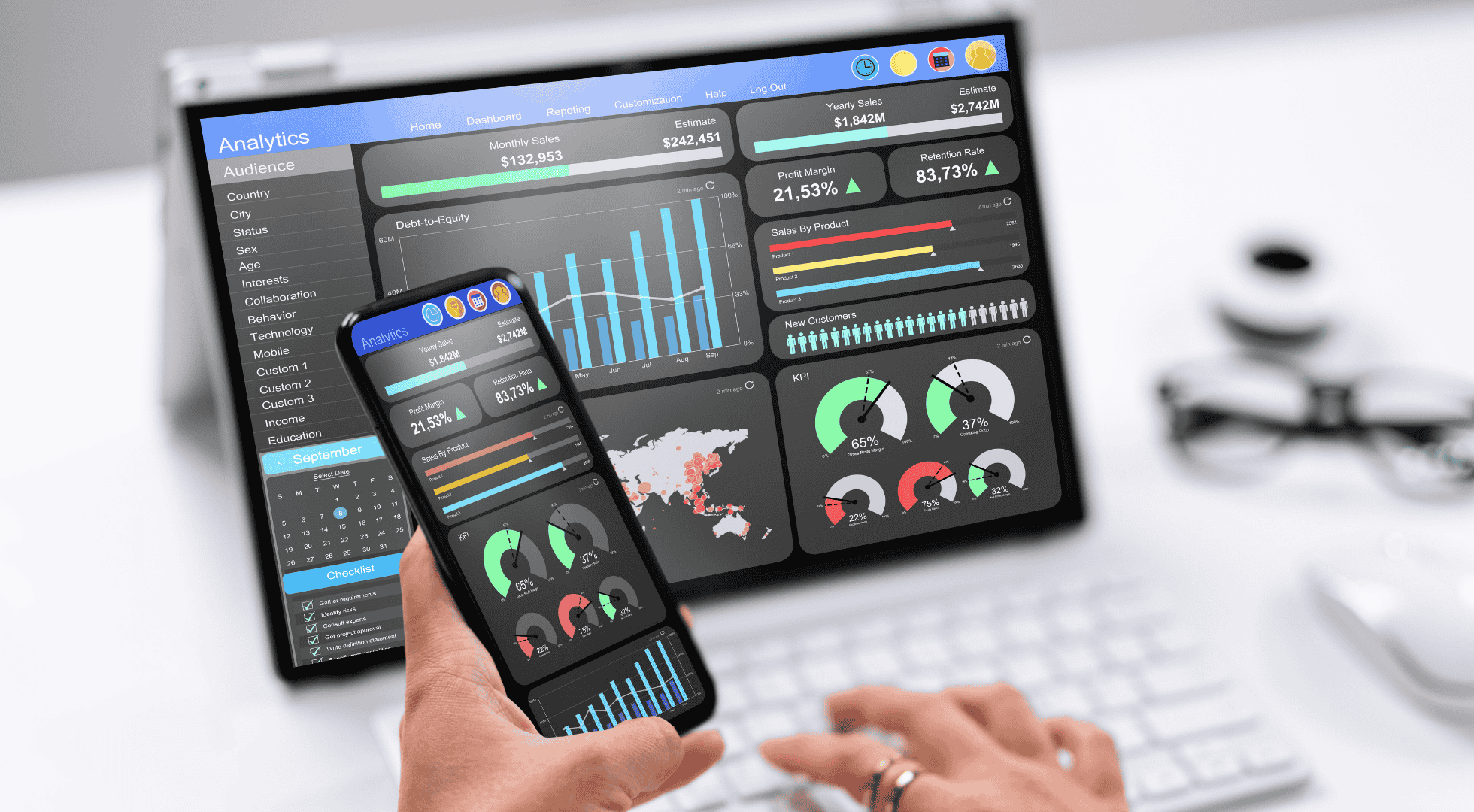Managing business travel efficiently is essential for any organisation looking to control costs and strengthen financial performance. Business travel analytics plays a crucial role here, offering valuable insights into spending patterns, policy compliance, and traveller satisfaction. By leveraging data, companies can identify trends, eliminate inefficiencies, and optimise their travel programmes to achieve greater returns on investment.

What is business travel analytics?
Business travel analytics is the process of gathering and examining data linked to corporate travel in order to guide smarter decisions. It focuses on areas such as tracking expenditure, ensuring compliance with travel policies, and understanding the habits and preferences of travellers. By applying these insights, organisations gain greater control and visibility over their travel programmes, helping them uncover ways to cut costs and run operations more effectively.
For example, by reviewing booking data, a company might discover that staff often choose premium flights despite cheaper options being available. Recognising this trend gives the business the chance to adjust its travel policy or secure better deals with selected airlines. Similarly, analytics can reveal which departments have lower compliance levels, allowing issues to be addressed promptly and encouraging stronger alignment with company guidelines.
Why business travel analytics matter
1. Smarter cost control
Analysing travel activity helps organisations understand how money is being spent and where it can be saved. With this knowledge, businesses are better positioned to negotiate favourable supplier contracts, manage budgets more effectively, and remove unnecessary expenditure.
2. Strengthening policy adherence
Travel policies are only effective when employees follow them. Analytics highlight patterns of non-compliance, offering a clear picture of where policies may need reinforcement. This data-driven approach ensures cost discipline, supports traveller safety, and keeps operations running smoothly.
3. Proactive risk preparedness
Every trip carries an element of uncertainty. By combining travel insights with external data—such as geopolitical developments or potential disruptions—organisations can anticipate risks and respond quickly. This not only protects employees but also reduces the impact on business continuity.
4. Guiding strategic choices
Travel analytics can do more than manage costs—it can inform broader business strategy. Linking travel data with performance metrics, such as revenue or market trends, helps leaders make well-grounded decisions on where to allocate resources or expand operations.
5. Enhancing the traveller experience
A seamless travel experience contributes to employee satisfaction and productivity. By pinpointing areas of frustration and recognising traveller preferences, companies can simplify processes, tailor support, and ultimately build a more positive travel culture.
Essential metrics in business travel analytics
To truly harness the power of business travel analytics, organisations need to focus on the metrics that matter most. These indicators shine a light on spending efficiency, policy effectiveness, and the overall travel experience.
1. Monitoring travel expenditure
Understanding how funds are distributed across flights, hotels, meals, and ground transport provides clarity on where money is being spent. Breaking this information down by team or individual makes it easier to identify spending trends and highlight opportunities for savings.
2. Understanding traveller experience
Feedback on how employees perceive their trips is a vital measure of satisfaction. Analysing this data allows organisations to pinpoint areas of improvement—whether in booking processes, comfort, or support during disruptions—leading to happier, more productive travellers.
3. Tracking policy adherence
Measuring how well staff follow corporate travel guidelines offers insight into where policies may be falling short. Persistent gaps in compliance often signal the need for clearer communication, revised rules, or more effective tools to support employees.
4. Assessing travel volume
Monitoring the number of trips taken, along with preferred modes of transport, gives a fuller picture of travel demand. Trends over time help businesses adjust policies, forecast budgets, and negotiate stronger deals with providers.
5. Calculating average trip costs

6. Measuring real savings
It’s not just about tracking what is spent, but also what is saved. Reviewing the financial impact of negotiated rates, policy adjustments, and efficiency measures ensures that cost-control strategies are genuinely delivering results.
Benefits of implementing business travel analytics
Integrating analytics into corporate travel management equips businesses with the insights needed to refine policies, reduce costs, and create a better overall travel experience for employees. A data-led approach makes it possible to spot inefficiencies early, negotiate stronger supplier agreements, and optimise budget allocations.
1. Enhanced employee satisfaction
Employee well-being is closely linked to the travel experience. Analytics shed light on how staff prefer to plan and book their journeys, helping companies adapt programmes to be more flexible and supportive. The result is greater satisfaction, productivity, and engagement.
2. More accurate forecasting
Reliable data leads to better planning. With analytics, organisations can forecast travel needs more precisely, leading to realistic budgets and stronger return on investment from corporate travel programmes.
3. Stronger policy compliance
Analytics highlight patterns of policy violations, providing clarity on why they occur and where adjustments are needed. This enables organisations to address overspending, reinforce guidelines, and ensure greater consistency in travel behaviour.
4. Better supplier choices
Travel analytics also help businesses evaluate vendors more effectively. By reviewing spend and performance, companies can select suppliers that offer the best value and negotiate discounts that match their travel patterns.
How to implement business travel analytics in your organisation
1. Define clear objectives
The first step is to establish what you want analytics to achieve. Goals may include lowering overall travel spend, strengthening policy adherence, improving forecasting, or enhancing the traveller experience. Having clear objectives ensures that data collection and analysis remain focused and relevant to your organisation’s priorities.
2. Consolidate travel data sources
Travel data is often scattered across multiple platforms—booking systems, expense reports, credit card transactions, and supplier invoices. Bringing this information together into a centralised system provides a comprehensive view of spending and employee behaviour. This consolidation is essential for accurate analysis and decision-making.
3. Invest in the right tools and technology
Specialised travel and expense management tools can help automate data collection, streamline reporting, and provide real-time insights. Choosing a solution that integrates well with your existing systems will reduce manual effort, minimise errors, and improve overall efficiency.
4. Analyse data to identify trends

5. Act on insights and refine policies
The value of analytics lies in applying what you learn. For example, if data reveals frequent last-minute bookings or underutilised negotiated rates, this may indicate the need for clearer policies or improved employee communication. Regularly revisiting policies based on evidence helps keep travel management efficient and effective.
6. Foster a culture of data-driven decision making
Successful implementation also depends on company culture. Encourage finance teams, travel managers, and employees to use data as a basis for decisions. Providing training and promoting transparency helps embed analytics into day-to-day operations, ensuring long-term success.
7. Monitor, evaluate, and improve
Business travel analytics is not a one-off exercise. Continuous monitoring allows organisations to measure the impact of changes, adapt to evolving travel needs, and maintain efficiency over time. Regular reviews ensure that the analytics programme continues to deliver value.
Gain visibility and control with Holiday Tours
In today’s data-driven world, visibility and control are the cornerstones of effective travel management. At Holiday Tours, we empower organisations to make smarter decisions through actionable insights, tailored analytics, and seamless travel solutions.
By combining advanced technology with our expertise, we help businesses stay ahead—optimising costs, strengthening compliance, supporting employee well-being, and driving sustainable travel practices.
With Holiday Tours as your partner, data becomes more than just numbers; it becomes a powerful tool to shape the future of your corporate travel programme.
LEARN MORE ABOUT DATA-DRIVEN TRAVEL
REACH OUT TO US AT +603 2303 9100 (PRESS 3) OR [email protected]
You may also be interested in:

